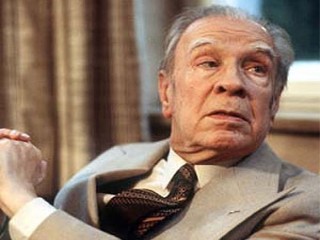
Jorge Luis Borges biography
Date of birth : 1899-08-24
Date of death : 1986-06-14
Birthplace : Buenos Aires, Argentina
Nationality : Argentine
Category : Famous Figures
Last modified : 2011-08-10
Credited as : Author and writer, poet, translator
The Argentine author, Jorge Luis Borges was one of Latin America's most original and influential prose writers and poets. His short stories revealed him as one of the great stylists of the Spanish language.
Jorge Luis Borges was born on August 24, 1899, in Buenos Aires. A few years later his family moved to the northern suburb of Palermo, which he was to celebrate in prose and verse. He received his earliest education at home, where he learned English and read widely in his father's library of English books. When Borges was nine years of age, he began his public schooling in Palermo, and in the same year, published his first literary undertaking—a translation into Spanish of Oscar Wilde's "The Happy Prince."
In 1914 the Borges family traveled to Europe. When World War I broke out, they settled for the duration in Switzerland where young Borges finished his formal education at the College in Geneva. By 1919, when the family moved on to Spain, Borges had learned several languages and had begun to write and translate poetry.
In Seville and Madrid he frequented literary gatherings where he absorbed the lessons of new poetical theorists of the time—especially those of Rafael Cansinos Assens, who headed a group of writers who came to be known as "ultraists." When the family returned to Argentina in 1921, Borges rediscovered his native Buenos Aires and began to write poems dealing with his intimate feelings for the city, its past, and certain fading features of its quiet suburbs. His early poetry was reflective in tone; metaphors dominated, usual linking words were suppressed, and the humble, tranquil aspects of the city that he evoked seemed somehow contaminated by eternity.
With other young Argentine writers, Borges collaborated in the founding of new publications, in which the ultraist mode was cultivated in the New World. In 1923 his first volume of poetry, Fervor of Buenos Aires, was published, and it also made somewhat of a name for him in Spain.
In 1925 his second book of poetry, Moon across the Way, appeared, followed in 1929 by San Martin Notebook—the last new collection of his verse to appear for three decades. Borges gradually developed a keen interest in literary criticism. His critical and philosophical essays began to fill most of the volumes he published during the period 1925-1940: Inquisitions (1925), The Dimensions of My Hope (1926), The Language of the Argentines (1928), Evaristo Carriego (1930), Discussion (1932), and History of Eternity (1938).
In 1938, with his father gravely ill from a heart ailment, Borges obtained an appointment in a municipal library in Buenos Aires. Before year's end, his father died. Borges, himself, came close to death from septicemia, the complication of an infected head injury.
This period of crisis produced an important change in Borges. He began to write prose fiction tales of a curious and highly original character. These pieces seemed to be philosophical essays invested with narrative qualities and tensions. Others were short stories infused with metaphorical concepts. Ten of these concise, well-executed stories were collected in Ficciones (1944). A second volume of similar tales, entitled The Aleph, was published in 1949. Borges's fame as a writer firmly rests on the narratives contained in these two books, to which other stories were added in later editions.
In 1955, following the overthrow of the Peronist regime in Argentina, Borges was named director of the National Library in Buenos Aires. In that same year his sight deteriorated to the point where he became almost totally blind.
After The Aleph, he published an important collection of essays, Other Inquisitions (1952); several collections of poetry and prose sketches, Dreamtigers (1960), In Praise of Darkness (1969), The Deep Rose (1975), and The Iron Coin (1976); and two collections of new short stories, Dr. Brodie's Report (1970) and The Book of Sand (1975). Aside from these works, Borges wrote over a dozen books in collaboration with other persons. Foremost among his collaborators was Adolfo Bioy Casares, an Argentine novelist and short-story writer, who was Borges's closest literary associate for nearly 40 years.
In 1961 Borges shared with Samuel Beckett the $10,000 International Publishers Prize, and world recognition at last began to come his way. He received countless honors and prizes. In 1970 he was the first recipient of the $25,000 Matarazzo Sobrinho Inter-American Literary Prize.
Borges married Elsa Astete Millan in 1967 but was divorced in 1970. He married Maria Kodama in 1986, shortly before his death on June 14, in Geneva, Switzerland.
















